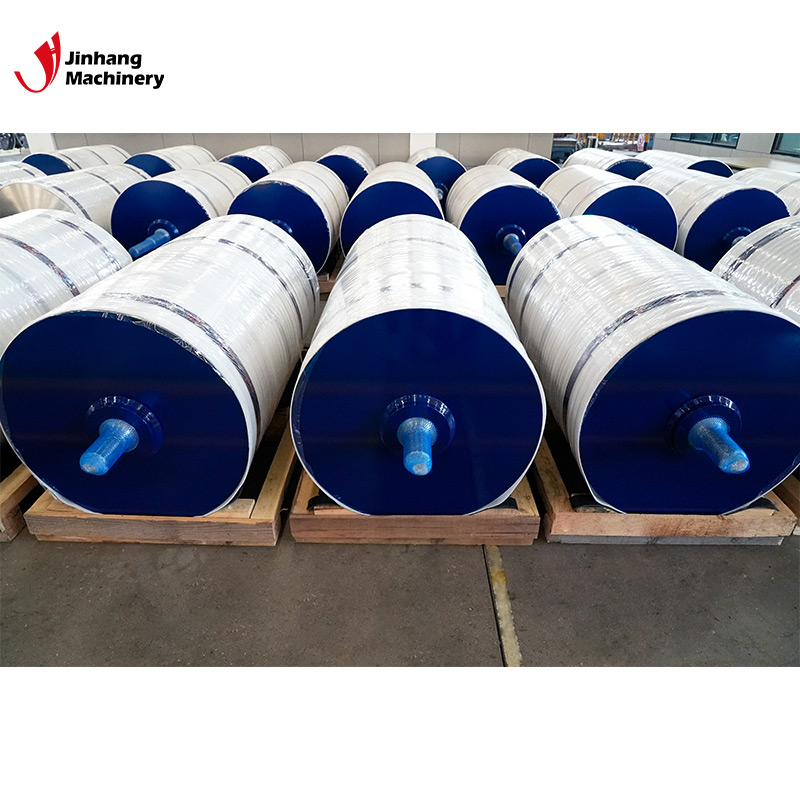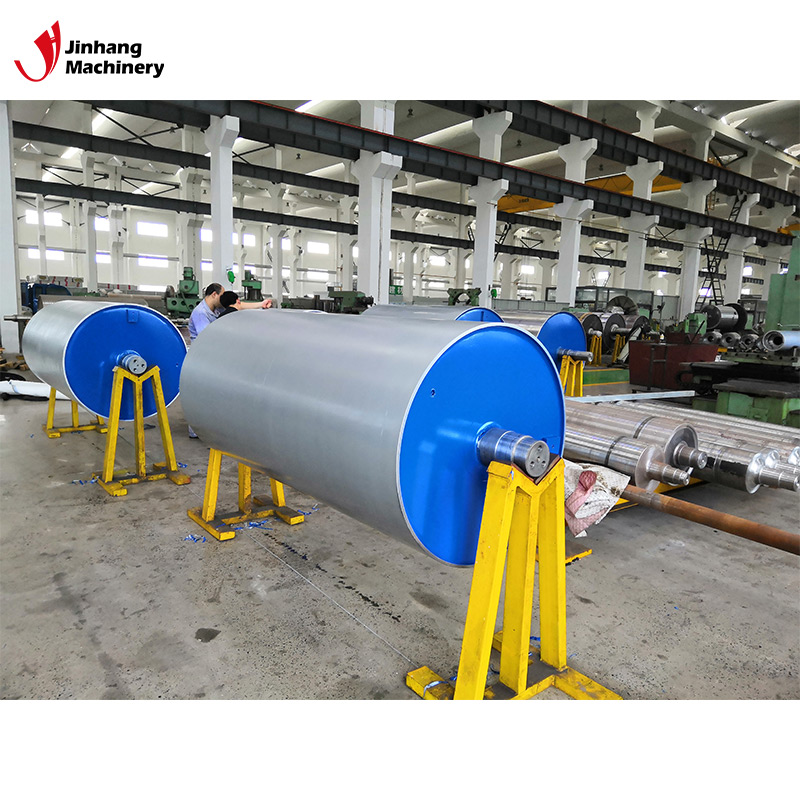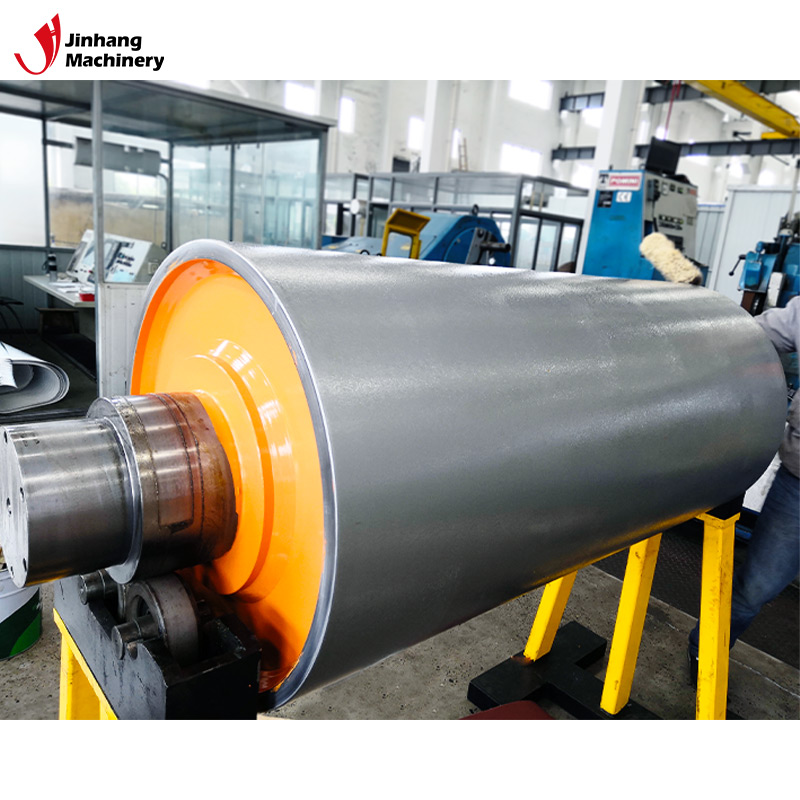How to Rejuvenate Industrial Rubber Rollers?
Industrial rubber rollers play a vital role in modern manufacturing and are widely used in conveying, printing, packaging and other fields. Although these rollers are widely used due to their durability and versatility, over time, rubber rollers may age, wear, harden or deform, affecting their performance.
Although replacement is inevitable, there are effective ways to extend the service life of rubber rollers and restore their original vitality. This article will explore in detail how to rejuvenate industrial rubber rollers through a series of maintenance and repair measures.

What are the reasons for the aging of rubber rollers?
Before discussing in depth how to rejuvenate rubber rollers, it is important to understand the main causes of rubber roller aging. Generally, the causes of rubber roller aging include the following aspects:
1. UV exposure: Rubber rollers exposed to sunlight for a long time will accelerate aging due to UV exposure, resulting in surface hardening and cracking.
2. Oxidation: Rubber reacts with oxygen in the air, and oxidation will make the rubber brittle and lose its elasticity over time.
3. Chemical corrosion: Contact with certain chemicals, such as acids, alkalis or oils, may accelerate the deterioration of rubber and cause damage to the roller surface.
4. Mechanical wear: The roller is subjected to mechanical pressure and friction during use. Long-term use will cause surface wear and loss of original functional characteristics.
5. Temperature changes: Rubber rollers used in high or low temperature environments may cause material deformation due to thermal expansion and contraction, thus affecting their performance.

How to restore the vitality of rubber rollers?
Although aging and wear of rubber rollers are inevitable, a series of maintenance and repair measures can effectively extend their service life and restore some vitality. The following are some effective ways to restore the vitality of rubber rollers:
Use rubber repair agents
Rubber repair agents are chemical preparations specially used to restore the softness and elasticity of rubber materials. They usually contain plasticizers, lubricants and antioxidants, which can penetrate into the rubber, soften the hardened rubber and reduce surface cracks. When using rubber repair agents, just spray them evenly on the surface of the rubber roller and gently massage or wait for them to absorb naturally to see significant results. Although this does not completely avoid replacing the roller, it can extend its service life.
Usage steps:
1. Clean the roller: Before applying the repair agent, make sure the roller surface is clean and free of oil, dust or other impurities. This helps the repair agent penetrate better into the rubber.
2. Spray the repair agent: Spray the repair agent evenly on the surface of the rubber roller, making sure to cover all aged or hardened areas.
3. Absorption time: Let the repair agent stay on the roller surface for a period of time so that the rubber can fully absorb the effective ingredients of the repair agent. This process usually takes a few minutes to tens of minutes, depending on the brand and instructions of the repair agent.
4. Wipe or massage: Some repair agents may need to be gently wiped or massaged after absorption to help the repair agent penetrate into the rubber structure.
5. Check the effect: Finally, check whether the surface of the rubber roller has become softer and more elastic. If the effect is not obvious, you can repeat the spraying several times.
Perform regular maintenance
Preventive maintenance is the key to extending the life of the rubber roller. Regular maintenance can effectively prevent the roller from premature aging or wear. Common maintenance methods include:
1. Cleaning and maintenance: Regularly clean the rubber roller to remove dust, dirt and chemical residues on the surface, which can effectively reduce the effects of surface wear and chemical corrosion. Use a mild detergent and soft cloth to wipe the roller surface, and avoid using detergents containing strong acids or strong alkalis to prevent damage to the rubber material.
2. Lubrication and maintenance: For rubber rollers that will contact other mechanical parts during use, proper lubrication and maintenance can reduce friction and reduce the wear rate. Using appropriate lubricating oil or grease can protect the rubber surface and keep it smooth and elastic.
3. Environmental control: Try to store the rubber roller in a cool and dry environment, avoid exposure to sunlight or contact with corrosive chemicals such as strong acids and alkalis. This can reduce damage to the roller from ultraviolet rays and chemical corrosion.

Heat treatment recovery
In some cases, moderate heat treatment can help restore the flexibility of the rubber roller. By heating the rubber roller to a certain temperature, the material structure of the rubber roller is softened, thereby restoring some elasticity and softness. This method is suitable for rubber rollers that have already hardened slightly.
Heat treatment steps:
1. Control temperature: The heating temperature needs to be strictly controlled to avoid excessive softening or deformation of the rubber roller due to excessive temperature. Generally, the temperature range should be between 60℃ and 80℃.
2. Uniform heating: Heat the rubber roller evenly. You can use an industrial oven or professional heating equipment to ensure uniform heat distribution.
3. Cooling recovery: After heating, gradually cool down and let the roller return to room temperature. The roller can be gently squeezed or turned during the process to ensure uniform recovery.
Replace or repair the outer layer of the roller
When the rubber roller is severely worn or aged, simple repair agents or maintenance measures may not be able to restore its performance. In this case, consider replacing or repairing the outer rubber layer of the roller. Common repair methods include re-encapsulating or replacing the rubber layer.
Steps to replace the outer layer:
1. Remove the old rubber layer: Remove the rubber layer that has been aged or worn from the core of the roller.
2. Clean the core: Make sure the core of the roller is clean and free of contamination to prepare for re-encapsulation.
3. Re-coating: Select the appropriate rubber material and re-coat the roller according to the working environment and requirements.
4. Curing treatment: Perform proper curing treatment on the rubber-coated roller to firmly bond the new rubber layer to the core part.

Use rubber protective agent
Rubber protective agent is a chemical agent specially used to protect the rubber surface. It can form a protective film to prevent the rubber from direct contact with the external environment, thereby delaying the aging process. The use of rubber protective agent can effectively reduce the impact of ultraviolet rays, oxidation and chemical corrosion on rubber rollers.
Usage steps:
1. Clean the roller: Before using the protective agent, make sure the roller surface is clean and dry.
2. Spray the protective agent: Spray the protective agent evenly on the surface of the rubber roller to avoid missing any part.
3. Natural drying: Let the protective agent dry naturally on the roller surface to form a protective film.
Conclusion
Rubber rollers play an indispensable role in industrial production, and maintaining their vitality is essential to improving production efficiency and product quality. By using rubber repair agents, regular maintenance, heat treatment recovery, and replacing the outer rubber, the service life of rubber rollers can be effectively extended, and equipment failures and downtime caused by roller aging and wear can be reduced. Although roller replacement is inevitable, taking these measures can maximize the use value of existing rollers, save costs for enterprises, and improve production efficiency.
